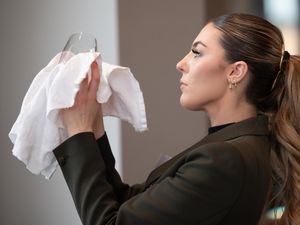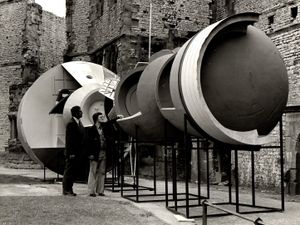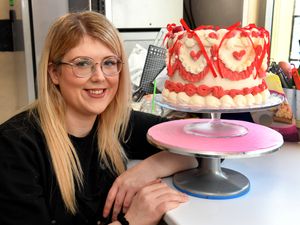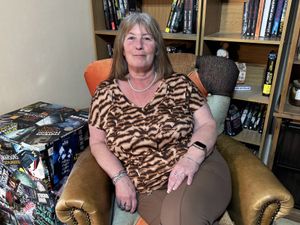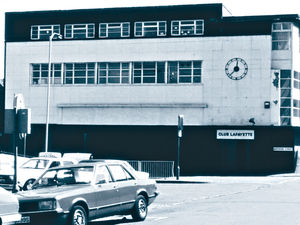Stunning paper art - Jennifer Collier brings treasures from the past to life
From love letters and post cards to sheet music and maps – Jennifer Collier turns papers from the past into intricate pieces of art.
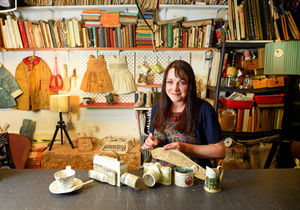
By stitching them together, as if they were cloth, she is able to give her recycled materials a new lease of life.
Her 3D sculptures are inspired by the vintage papers that have been rescued from the likes of charity shops and flea markets.
They include a phone made from old directories, a sewing machine from dressmaking patterns and a camera from treasured photographs while pre-loved Ladybird books have been turned into bird boxes.
“It’s about saving these beautiful papers from landfill and reusing them so they can be loved again,” says the 42-year-old, from Great Haywood, near Stafford.
Jennifer, who has been making her paper stitch sculptures for 20 years, graduated with a BA (Hons) degree in textiles, specialising in print, knit and weave, in 1999.
She previously had studios at the Museum of Science & Industry in Manchester and in Stockport before moving back to Staffordshire.
Now Jennifer and her husband, Iain Perry, who is a screenprinter, run Unit Twelve gallery in Tixall where she has a studio space along with five other artists.
It’s here where she stores her stash of treasured papers until inspiration strikes and also where her creations come to life.
“I might have them years before I find the right use for them. I love papers that have had a life – cook books that have been splashed or sheets of music and books that have been annotated.
“Other people might throw them away but these are the papers I want to save from landfill,” says Jennifer, who uses both hand and machine stitch in her work.
Although most of the items are purely decorative, she does make functional light shades and has been supplying these to fashion company White Stuff. They are now on display in more than 35 shops around the country.
All of her pieces are life-size and her smallest items are her teaspoons made from a selection of vintage papers, including dressmaking patterns, pages from A Country Diary, and sheet music.
While the largest are her paper armchairs which can be seen in the exhibition space at her gallery where she also runs workshops teaching some of the skills she uses in her work.
It can take her a week to complete an item the size of a typewriter and around an hour for a smaller piece such as a jug.
“They are all actual size. If I’m making a camera, I always have the real camera in front of me so I can see the pieces needed and how it fits together.
“It’s a bit like making a dress. You start with a pattern and then work out how to fit the pieces together and then once you’ve done that you make it from the nice vintage papers,” explains Jennifer, who has seen her work featured in more than 60 magazines and over 15 books.
As well as keeping discarded papers alive for future generations, she also, where possible, uses traditional embroidery techniques such as picot stitch, cross stitch, button loops and Venetian needle stitch.
“I enjoy sewing, especially the therapeutic side of it, and using heritage stitches that people don’t use as much anymore,” says Jennifer.
She also creates a lot of items such as shoes, tea cups and lampshades from the popular orange Penguin paperback books and has a collection featuring classics from the Brontë sisters.
“It’s such an iconic design – people adore anything with Penguin orange,” Jennifer tells Weekend.Many of the materials she uses for commissions will spark memories for the owner. It may be a place on a map that has a special meaning for them, a book they have read, personal letters or paperwork such as a birth certificate or an item they have used.
As paper is the traditional gift for a first wedding anniversary, Jennifer is often asked to make special presents for couples celebrating the milestone
Where possible she likes to incorporate the date if there is one on the paper she is using so that its age is clear to the viewer.
Despite the seemingly delicate nature of the material, Jennifer says it is actually very “robust”.
“People ask if they are fragile but if you compare them with ceramics which would smash if you dropped them they are strong and the papers have already been around for a long time,” she explains.
When it comes to working with the material, which isn’t treated, she says that she does need to be careful so it doesn’t tear.
But over the years she has honed her skills to ensure she’s using the correct techniques to prevent this from happening.
“I’ve been doing it for 20 years so I know how far I can push the paper and what papers to use for each job,” says Jennifer.
She loves being creative with her work and helping to keep a bit of history alive.
“I really enjoy the meticulous attention to detail, like make sure the seams meet up perfectly, and with an object like a typewriter, making sure all the parts such as the keys are there,” says Jennifer.
Her work, which she sells through her website, gallery, shops and shows as well as commissions, is proving popular across Europe and America.
“They’re historical English papers and they value hand-made and British contemporary craft. They appreciate the quintessential Englishness of my work,” says Jennifer.
See www.jennifercollier.co.uk

